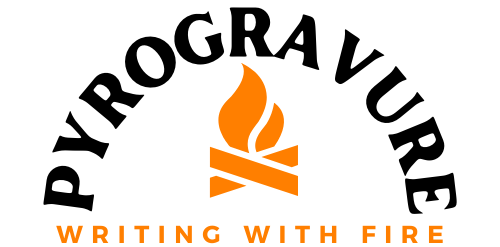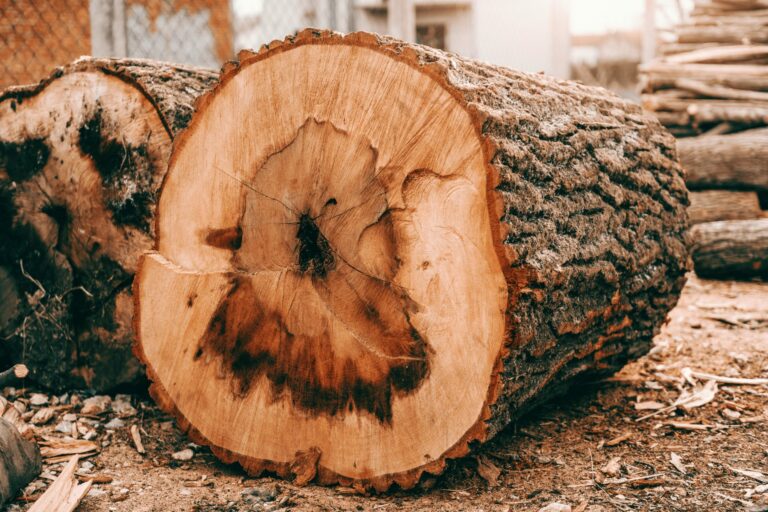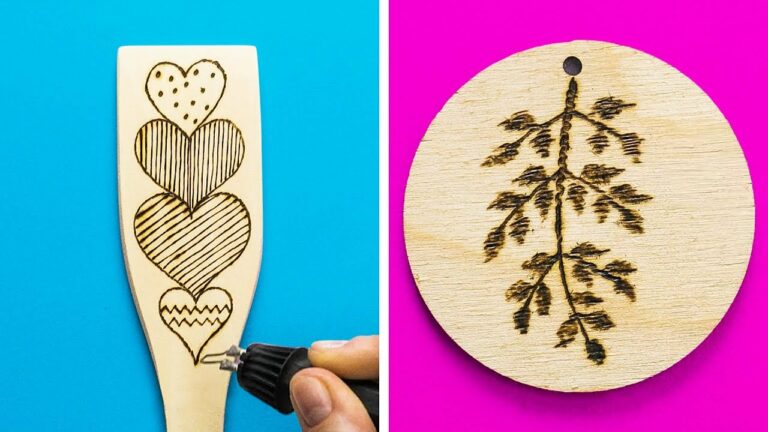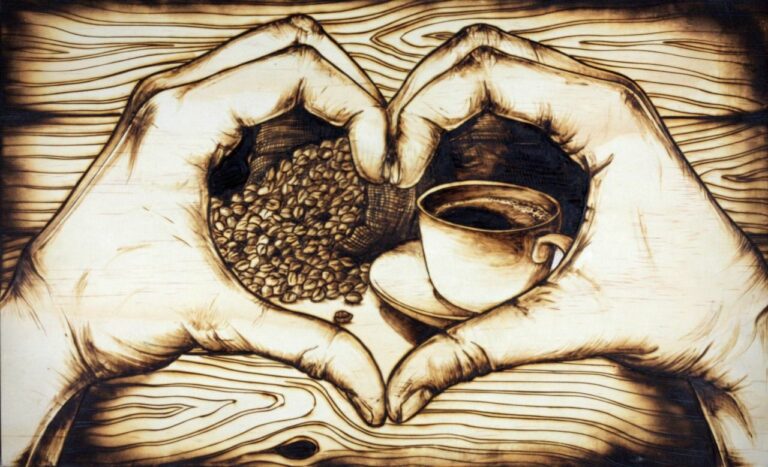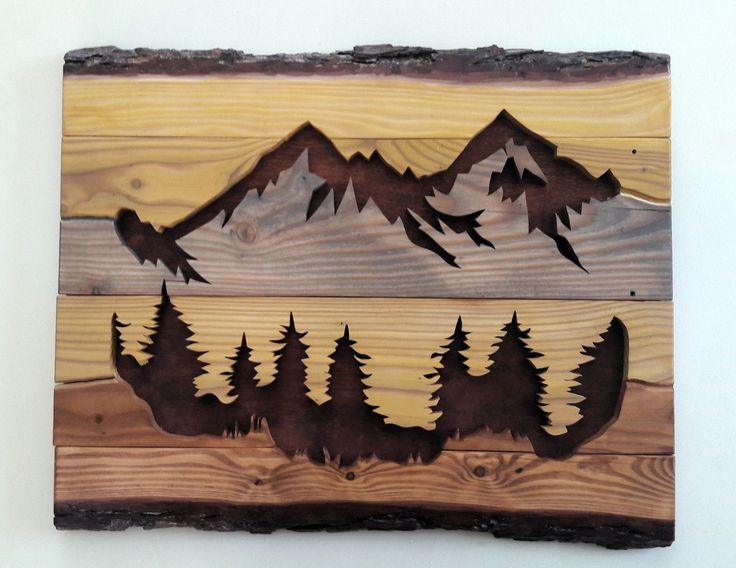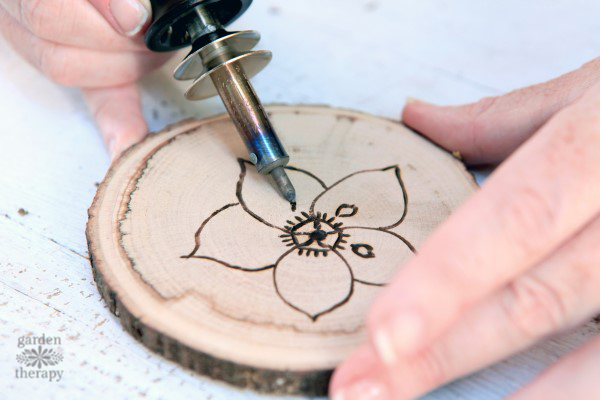Wood burning is the creative art of burning images on a wooden surface, mainly done using a heated tool. Creating a wood-burning art piece involves following specific steps, like preparing the wood, choosing the right tips, and putting a suitable wood-burning finish to protect and preserve the piece. There are various ways to apply a finish; one such technique is burning the wood with a torch.
How to Burn Wood Using a Blow Torch?
When you are building a new wooden deck, furniture or a panel on your wall, you want it to be long-lasting and beautiful. You can certainly use various types of chemical finishes on untreated wood, which will help preserve the wooden item for a prolonged period of time and stain or paint to enhance the visual appeal of the wooden item.
Though these are prevalent methods of preserving and making the team visually appealing, applying chemical finishes and stains is time-consuming and needs to be done separately. On the other hand, the burnt wood technique is much easier and can be done by any individual who understands wood burning and knows how to handle a blow torch.
Burning the wood is one of the many ways to apply a finish on a wood-burning art piece to protect and preserve it. This technique is also known as Shou Sugi Ban or Yakisugi[1], which gives a unique and rustic appearance to the wood item. Shou Sugi Ban is a traditional Japanese technique practiced for centuries as a finish on wooden items.
A burnt wood finish has many applications and can be practiced in a vast array of interior and exterior projects. If you want to give an old piece of wooden furniture a new look or want to add an aesthetic touch to your interiors, doing a burnt wood finish will add depth and character that any other finishing technique cannot obtain.
Today, the burnt wood technique is highly used by professionals in architecture and interior design. The method of Shou sugi ban or burnt wood finish has also gained popularity among individuals who like to do DIY projects. In addition to the traditional way, there are many modern ways in which you can apply this technique by adding colors and contrasting shades.
The central theme of the burnt wood technique is to obtain a black layer of carbon on the top surface of the wooden item by burning it. Traditionally, in japan, it was done by creating a triangle using three wooden planks to form a fireplace and then the fire was lit at the base of the chimney. The fire rises and burns the wood evenly, and it is brushed and wiped accordingly. This traditional way of doing this method is not easy and comfortable for a regular individual who does not have much experience. As a result, today, you can find an array of alternatives to this technique, especially the DIY burnt wood technique.
When doing a burnt wood finish, there are a few things that one needs to take into consideration.
Thing to take care of when beginning
Wood Type
The kind of wood type you are choosing determines the final look of the wood item highly. Generally, for a burnt wood finish, it is recommended to use a softwood type like cedar, pine, poplar, or cypress. If you want, you can also use hardwoods like oak, cherry, walnut or any other, but the texture and color contrast associated with a burnt wood finish will not be achieved with hardwood. Regardless of the wood type, it would be best if you consider a wood type which has wide grain, and many knots are ideal for this finish
Type of Blow Torch
For the burnt wood method, you can use a propane torch. There are many types, but for this purpose, you can use a handheld plumber’s torch or a larger weed torch, known as a roofers torch. A weed torch will provide you with better control and coverage though it can char the wood excessively and is also expensive. A plumber’s torch, on the other hand, is affordable but will not be able to offer you the same level of control and coverage.
Brush Type
When it comes to the type of brush that you should use for the burnt wood technique, there are mainly two types- a stiff-bristle nylon brush or a wire brush. A stiff-bristle brush is not as fast as a wire brush when removing the char. A wire brush can leave behind large scratches or tool marks on the wood surface.
Safety Precautions
Maintaining the required safety precautions when doing the burnt wood technique is important. Keep a fire extinguisher or a spray bottle of water for a small flare-up, as you will be using open fire on a flammable item. Wear Personal protective equipment to prevent oneself from burns. Wear safety gloves and safety glasses, as the sap from wood, may bubble and pop when exposed to an open flame. Also, it is recommended to wear a face mask to prevent the ash and char from entering your lungs.
To begin with the burnt wood technique, you first need to choose your preferred wood type. The burnt wood technique does not require you to prepare the wood by sanding it, as burning the wood surface will remove all the roughness. A propane blow torch will provide you with maximum flame control.
As the main aim of the burnt wood technique is to form a black carbon layer on the wood surface, to do so, you would need to set the torch flame temperature between 250 to 500°C; otherwise, the carbon will not be formed. The size of the flame determines the heat and intensity of the burning. The propane torch produces this flame. The intensity will be more if the flame is small as the heart of the flame will be closer to the surface of the wood item. It will be best if you move the torch in a small motion.
It must be from one end of the wood to another in the direction of the wood fibers. And it is to get an even rendering. This method involves using open flame, but it is not an indoor activity. The burnt wood ethos should be carried outdoors on a windless day to avoid the risk of free fire. And it is also to protect oneself from fire and potential burns. Personal protective equipment like fire-resistant gloves and face masks, and You should wear eyeglasses.
What is shou sugi ban and how to do it?
Wooden items are preserved to make them last longer by applying a suitable finish on the wooden surface. There are various ways by which one can apply a finish to preserve the wood, like using chemical preservatives and stains. One such way to preserve wood is the shou sugi ban.
The origins of the Shou sugi ban date back to the eighteenth century. It is a Japanese technique for preserving wood with fire. It primarily applied outdoor wooden boards used for sliding to make them weatherproof. The word Shou sugi ban literally means “burnt cedar board”, which is used in the west for Yakisugi. Traditionally people used it with cedar wood, but it can be used on any wood type, preferably softwood like cypress, ash, oak, maple, etc.
Shou sugi ban involves forming a black carbon layer on the top surface of the wood by scorching it with a torch or controlled fire. Burning the wood makes it last long as it makes it resistant to sunlight, water, and fire. Once the wood is, burned, it needs to cool down, and the char should be softened with a wire brush or any other suitable brush available. The process makes the wood sturdy and provides a Matt Black finish which looks very elegant.
In recent years, the shou sugi ban has gained popularity. It is used on softwood types for various interior and exterior applications by both professionals and individuals who like to do DIY projects. Doing shou sugi ban involves certain crucial steps. To do shou sugi ban, you can follow the given steps.
Step 1- Choose a Wood Type
One of the first things that you have to do is choose a wood type. The type of wood you choose greatly influences the final texture and look of the wood item. There are various types of wood available in the market. For shou sugi ban, it is recommended to use a softwood type like cedar, pine, pipal, cypress, etc.
You can also use hardwood if you want, but your final look and colour will not be of a typical shou sugi ban. The main thing that one should remember while choosing a wood type is that it should have a wide grain with several knots, which will help you to achieve the look.
Step 2- Start burning with a blow torch
Once you have chosen a wood type, you can start burning it. Unlike other methods of applying a finish on a wood surface, shou sugi ban does not require you to prepare the wooden surface before applying the finish. You can use a propane hand blow torch to burn the wooden surface. There are mainly two types of propane torch- handheld plumbers torch or weed torch. A weed torch gives you better control though it is expensive, whereas a handheld plumber’s torch is affordable.
The torch you will be using should reach a temperature of 500°C, so to form a black layer of carbon, a temperature between 250 to 500°C is required. The torch should be held 12 to 18 inches above the wood surface. The size of the flame determines the intensity of the flame. Therefore for maximum impact, the size of the flame should be small. A small flame will have more impact than a big flame as for a small flame, the heart of the flame will be more close to the wood surface. For an even burn, the torch should be moved slowly from one edge of the wood item to another.
Step 3- Prepare the surface before Staining
After you have burned the wood and a black layer of carbon is formed, you would need to let the wood cool down. Once it is cool, you can start prepping the wooden surface by softening the char. When doing this, use gentle strokes or else the wire brush can scratch the wood surface, leaving visible lines.
If the char is very thick, you can use the brush in a faster and thick stroke to remove the top layer of ash. Do this process until you have removed all the excessive soot and ash. You can use an air compressor to remove any remaining ash or soot.
Step 4- staining the wooden surface
Once the surface is prepped, you can start staining it. While applying the stain, you need to be careful not to start working on a large area. Rather, take small areas and paint them. It is essential to do it in such a way as the stain needs to be wiped back before it sets too heavily. After applying a single coat of the stain, wipe it back after five to ten seconds.
To make the stain shou sugi ban pop, sand it with 220 grit sandpaper in areas you would like to keep a natural wood look, ideally in the areas where the grain blends. Once you are done with everything, apply a few coats of wipe-on poly.
Summary
Therefore, shou sugi ban is a beautiful way of adding a finish to your wood project, which fortifies the wooden item and makes it last longer. Any individual can use the new alternative of the burnt wood technique for their next DIY project. In addition to increasing the longevity of the wooden item, it also adds an elegant look to the finished product.
References
-
Lyon, S. (2021). Getting familiar with the Yakisugi technique. The Spruce. https://www.thespruce.com/japanese-yakisugi-technique-explained-5204149
